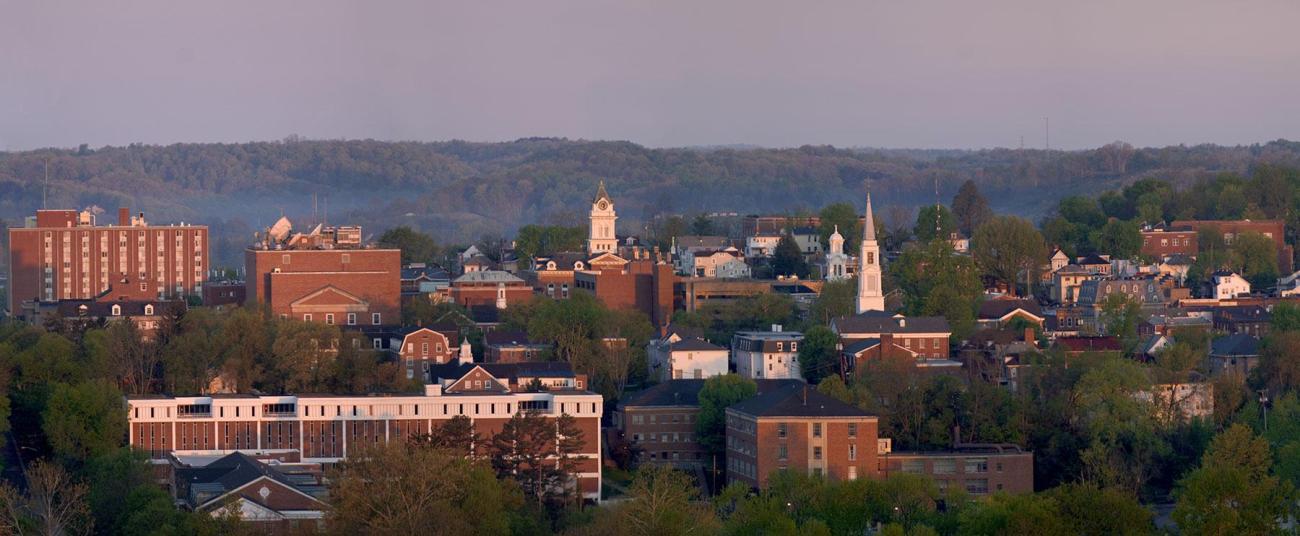

The 2017 Curriculum infographic outlining progress towards the 2011 sustainability benchmarks and new goals set for fiscal year 2026. Click the tabs below to learn more!
Accessibility View of Curriculum Graphic
Where we are now (2017): Progress toward 2011 Sustainability Plan
-
Benchmark 8: Improve sustainability literacy of students, faculty and staff. In progress; literacy is improving, according to surveys.
-
Benchmark 9: Increase enrollment in sustainability-themed courses, majors and programs. Target of 5% increase since Dec 2011 easily met.
-
Benchmark 11: Provide undergraduate students with a sustainability-focused major, degree program or equivalent. Target achieved.
Curriculum Graphics
The above graphic shows how Ohio University compares against other programs by STARS. As seen above, Ohio University is below the national average.
The above graphic shows the breakdown of carbon emissions at Ohio University. Curriculum can be tied to all Ohio University carbon emissions.
Moving Forward: 2017 Sustainability & Climate Action Plan Goal #1
Goal 1: Increase opportunities for formal, experiential, and community-engaged sustainability learning experiences by the following targets:
- Increase the number of undergraduates enrolled in sustainability majors (Urban Planning & Sustainability and HTC Environmental Studies) from 44 to 75
- Increase the number of graduate students enrolled in sustainability majors (Environmental Studies) from 42 to 60
- Increase the number of students enrolled in sustainability certificate programs (Environmental Studies and Environmental Studies-Sustainability) from 74 to 100
- Increase the percentage of Ohio University course offerings including sustainability (as defined by AASHE in the AC1 section (opens in a new window) of the Technical Manual) from 2.3% to 7.5%
- Increase the percentage of students taking a course with sustainability learning outcomes (as defined by AASHE in the AC2 section (opens in a new window) of the Technical Manual) from 7% to 25%
- Increase the number of students involved in Sustainability Project Laboratory(opens in a new window) curricular and co-curricular projects from 0 to 200
Potential Strategies
-
Create incentives and training program for sustainability course development
-
Develop sustainability learning outcomes to embed in general education, colleges, departments, experiential learning program, community engagement (C-courses) and honors programs
-
Showcase and expand sustainability components of existing programs, majors, certificate programs, co- and cross-curricular experiential learning and community engagement experiences
-
Incorporate sustainability into immersive study experiences
-
Explore sustainability course designation
Benefits of Goal #1
- Increase reputation
- Enhanced academic quality
- Proactive environmental behavior
Costs of Goal #1
- Staff time
Moving Forward: 2017 Sustainability & Climate Action Plan Goal #2
Goal 2: Assess and strengthen sustainability culture and literacy by evaluating performance on a literacy survey or test. In FY17, sustainability literacy was defined as being able to correctly answer 6 simple questions about the climate. For FY26, the target will be using a more rigorous literacy test. In FY17, 73% of campus community answered all 6 questions correctly. The goal for FY26 is to have 60% of campus community answer all 6 questions correctly on a more rigorous test.
Potential Strategies
-
Adopt standard literacy survey such as Sulitest(opens in a new window)
-
Engage with Libraries to create online curricular sustainability resources
-
Create strong OHIO sustainability network through the Sustainability Hub programs
Benefits of Goal #2
- Increase reputation
- Enhanced academic quality
- Proactive environmental behavior
Costs of Goal #2
- Staff time
- Operation and management costs
Current Data
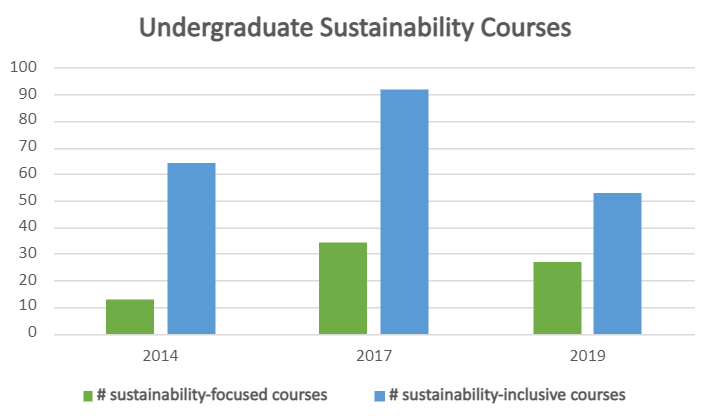
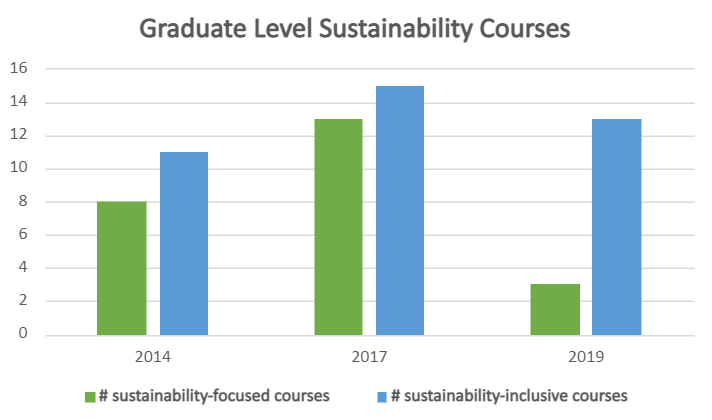
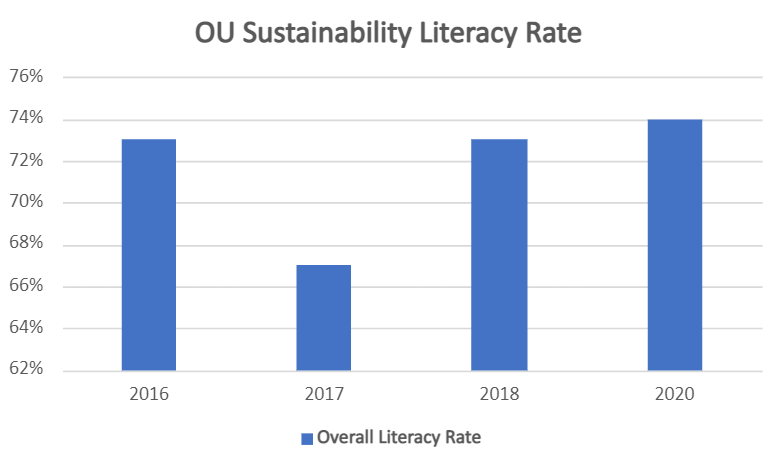
The Sustainability Project Laboratory is a database of sustainability-related project proposals. This resource hosts projects and project ideas that can be adopted by faculty, staff, and students for course projects, capstone or senior projects, theses, and more. https://www.ohio.edu/sustainability/reporting/sustainability-project-laboratory
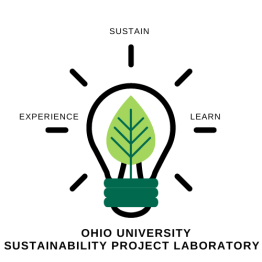
Sustainability Course Listings: The Office of Sustainability maintains a listing of undergraduate and graduate course which are sustainability-focused or sustainability-related, according to the Association for the Advancement of Sustainability in Higher Education.
Ohio University has several degree and certificate programs in sustainability, including Urban Planning and Sustainability and Environmental Science and Sustainability undergraduate programs,a Masters of Science in Environmental Studies and an online Masters in Sustainability, Security and Resilience .

